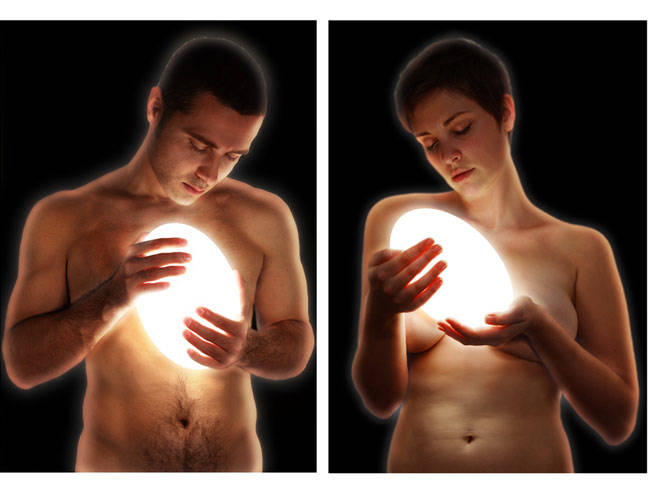Renato Miracco, a Question of Energy
We arrive at his office, climbing the old staircase of the small building on Park Avenue. Before reaching his floor, we hear voices and ringing telephones. Movement. The door to the office is open. His assistant welcomes us. Renato Miracco, the recently-appointed director of the Institute, gives instructions, asks for information, and takes three telephone calls in three minutes. He speaks with colleagues, looks up, greets us.
There is something about the place that we don’t recognize, even though we have visited here many times. The surroundings and the furniture are more or less the same, with a few additions. Some flowers, some fruit.
There is a different sense of the space that is responsible for this feeling. A well thought-out design plan. The desk is not as far away as before; we don’t have to walk the length of the room to reach it. Positioned near the door, the desk fully participates in the work life of the man who sits at it. In front of him, two sofas seem to be engaged in conversation. Books, flowers, oranges in a bowl add a natural touch.
Space and time, energy and organization – these are the common threads that recur throughout the interview. What follows is an exchange of impressions and opinions with the new director, a week after his appointment.
He introduces himself with a few words. “This is a role that I wanted, one that I sought after. I like it. I believe that here there are opportunities to accomplish so much and I am a person who wants to do it. Besides that, I already have experience with American culture. I have organized many important shows in the U.S.”
Born in 1953, Miracco is a professor, curator, and art historian, and in fact he has curated many significant Italian art exhibits all over the world on behalf of the Minister of Foreign Affairs (in London for the Tate Modern, for example) and institutions such as the Estorick Collection of London and the Reina Sofia Museum in Madrid, as well as the Camera dei Deputati in Rome. Miracco is an expert on Italian Futurism and the so-called Arte Informale, as well as a devoted connoisseur of Fontana, Burri and the “Roman School,” and artists such as Afro, Mirko, and Morandi.
Within a few days the president of the republic, Giorgio Napolitano, will visit the United States. Miracco tells us, “I am preparing for two important events, one in Washington and the other in New York. We will have him visit New York cultural institutions. He will then see the personality of this world. But I also want to organize an event with Italian artists living in New York, which has never been done.”
Miracco favors bringing Italian exhibits and events to the U.S. and vice versa. “New York is important. We don’t have to focus our attention only on Italian culture, but we should also promote shows that Americans want to bring to Italy. We have to facilitate this type of exchange in both senses. It would great if in the process we helped to export American culture. It is important for the flows to be liberated. In this way, we succeed in strengthening culture in both countries. One of the exhibitions that I would like to produce, in fact, has specifically to do with fluidity. I would like to recount how Italians came to America and how Americans went to Italy.”
We recall that the great artist Gino Marotta said that all too frequently critics and politicians are guilty of “cultural illiteracy,” and that they have enabled the “cultural colonization” perpetrated by the U.S., thereby forgetting how much Italy has taught the American people. “But I don’t like the term colonization,” adds Miracco. “I would rather speak of importation and promotion of both cultures. We have to look to reestablish connections. For example, Frank Stella has an archive of Futurist art; let’s put it on display. Marinetti donated his archive to Yale; let’s pull it out. And I know for sure that Ezra Pound had an archive at Yale that is not only artistic, but is also a significant representation of another world. A successful shift is needed to create these links. Recapturing the cultural attention of the two countries – I strongly believe in that.”
But is the newly-appointed director aware of the problems he will encounter? “I am a workaholic. I work twelve hours a day. I instituted the concept of regular a staff meetings, which during Furio Colombo’s tenure did not exist. These are weekly meetings that I attend. The Consulate and the Cultural Institute will work together to promote their events. Where I can lend a hand I will and they will do the same for me.”
Optimizing the resources within diplomatic channels to attain efficiency is not easy. The new director is one of the supporters of the so-called “interconnectedness.” It means working together to execute important events and splitting the costs among various institutions. “Interconnectedness, however, must be dynamic. It must relate back to everyday reality. I am organizing shows that will tour the entire U.S. There will be a thorough attention to detail, even if there are many organizational difficulties to resolve. I believe, though, in the will to do something, to get something accomplished. Everything will be done voluntarily and as quickly as possible.”
For Miracco, “Reinvention is a must. To create a new lifeblood requires a profound humility. Every one of us must be able to listen and everyone must go beyond self-promotion. Let’s get together. I organized a meeting in Washington fifteen days ago to do just that. One must listen and act decisively. There are certainly drawbacks to each side and I’ve only been here a week, but let’s see what I can accomplish.”
With reference to information and organization of events, Miracco is perfectly clear: “One of the first things we must do is create a comprehensive mailing list. I tell everyone who is interested: you must get in touch with us. We will sponsor events with American organizations and institutions. We want the American public. Shortly, I will schedule a time to meet with journalists. But I don’t just want to introduce and promote myself. I want advice, even if I am the first one who has been proactive.”
He continues, “On the one hand, we need to establish relationships with leaders in the world of culture, for example the Museum of Modern Art, the Metropolitan, and the Whitney. Then we need to create a board to find funding to restore the Institute’s headquarters on Park Avenue. I would create an association, the Italian Friends of Culture, because this building absolutely needs to be restored. We will reach out to Bracco, Ferragamo, and others. We have to put this mechanism to work.”
One of the biggest challenges that the representatives of the Italian cultural and economic world in New York face is intensely and frequently disorganized activity. There are too many events to organize and oversee simultaneously.
“Organization. The problem is that we do not need to promote ourselves, but rather our country. It is not necessary to think that we must get there first, because in the end we will go nowhere. And we will come in last. We have to put systems in place. It seems banal and trite, but we must work together to put systems in place. The individual road will not take us anywhere. I, for one, am capable and have the ability to cultivate relationships, but working alone I will get nowhere.”
An example? “With the consul general, we are trying to understand how we can help each other. We have in fact, looked at our schedules this week. It turns out that there are some events that we could have both attended, but then because of the way things go, we were expected elsewhere. One of us could have attended in the other’s stead. We could take turns. Interconnectedness is a gift that no single person possesses. It is important to know what others are doing. This problem also applies to the inner workings of the Institute. I have three colleagues who manage three different sectors. One doesn’t know the events that the other is planning. The problem seems very straightforward, but it is necessary to change the mentality of the individuals involved. This will be my ultimate challenge.”
We finally ask for a realistic prediction of what Miracco expects to successfully accomplish over the next two years. “Two years is a very short time, but I can give a conservative estimate. I would like to create the foundation for the organization Friends of Italy and begin to change the image of this place. Tomorrow I am buying plants, and paying for them out of my own pocket…. There is still a lot of work to be done in this sense. There are rooms to be arranged; the bath was covered in dust and full of big boxes. I can’t work in this kind of environment. I developed an allergy to the dust. And then I also have the opportunity to bring in 60 works of art to create the Institute’s collection.”
He adds, “But it is also a question of energy. If one looks someone in the eyes, it stimulates the other’s energy, and that is how progress is made. We can do things if this place becomes energetic. I feel rage when I see what the Spanish Cultural Institute next door is doing and how it is different. They are perfect…for me this is huge. I adore the Spaniards’ energy, and theirs is a fantastic institute. But here, there is an energetic depression and we cannot permit it. New York is the cultural capital of the world and we must do what we can to move forward. Culture is not only large-scale events to be executed. At times, we rest on our laurels. Yes, we have Raffaello, Tiziano...but culture is also all about systems, synergy. Everything is culture. We can’t live only for big events. Even the small-scale is part of the system and it is part of the culture. There are for example so many great artists who are unknown..... I can name a few such as Renato D'Agostino and Antonio Pio Saracino. They are a few of the many artists we cannot forget. They would allow us to make a wonderful impression abroad. But we don’t know them, neither in Italy nor in America. This should not be possible… These are small signs, slight indications that one thing is born from another and we see what we can do.”
We leave the director to his work. We have taken note of several ingredients in his recipe for success: careful management of space and time in order to work more efficiently and to promote awareness; increased energy; and above all, organization to ensure that our culture will be part of the future of New York.
(Translated by Giulia Prestia)





































i-Italy
Facebook
Google+
This work may not be reproduced, in whole or in part, without prior written permission.
Questo lavoro non può essere riprodotto, in tutto o in parte, senza permesso scritto.